Discover 10 hidden attractions, cool sights, and unusual things to do in Pszczyna (Poland). Don't miss out on these must-see attractions: Zamek w Pszczynie, The Princely Pheasantry, and Kościół pw. Wszystkich Świętych. Also, be sure to include Muzeum Prasy Śląskiej in your itinerary.
Below, you can find the list of the most amazing places you should visit in Pszczyna (Silesian).
Table of Contents
Zamek w Pszczynie
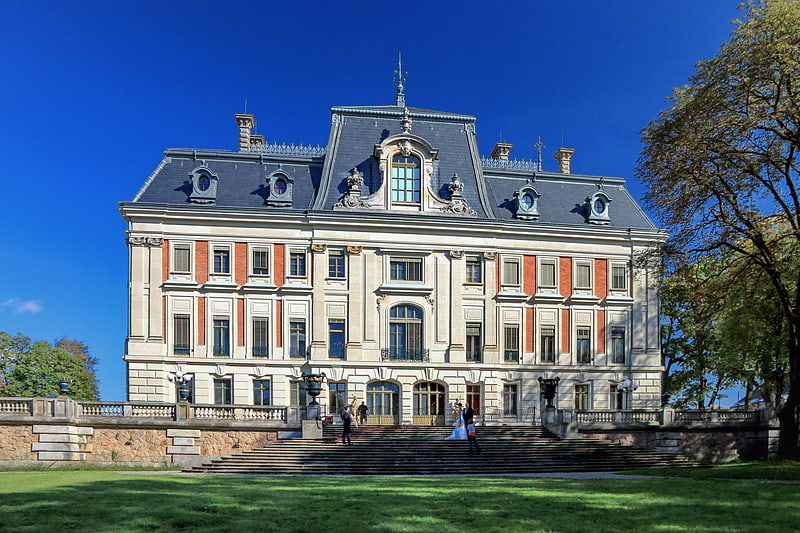
Baroque castle with 19th-century decor. Pszczyna Castle, also known in English as Pless Castle, is a classical-style palace in the city of Pszczyna in southwestern Poland. Constructed as a castle in 13th century or earlier, in a Gothic architectural style, it was rebuilt in a Renaissance style in the 17th century. During the course of the 18th and 19th centuries, the exterior of the castle was partially changed into a Baroque-Classical style. The Classicist modernization transformed the complex into what is usually described a palace.
In its history the castle was a residence of Silesian and Polish Piast nobles, then the German von Promnitz noble clan (mid-16th to mid-18th centuries) and later the German von Pless family. The castle became owned by the state after the death of the last Prince of Pless, Hans Heinrich XV in 1936.
In 2009 it was voted as one of the "Seven Architectural Wonders of the Silesian Voivodeship" by the Silesian authorities and is often described as one of the most beautiful castle residences in Poland.[1]
Address: Brama Wybrańców 1, 43-200 Pszczyna
The Princely Pheasantry

Also known as: Książęca Bażantarnia
The Princely Pheasantry is a late 18th-century neoclassical building in Poręba, Pszczyna County, Silesian Voivodeship, southern Poland. It was founded by the Prince of Pszczyna Frederick Erdmann, designed by Wilhelm Pusch and built between 1792 and 1800.[2]
Address: Barbórki 47, 43-200 Pszczyna
Kościół pw. Wszystkich Świętych
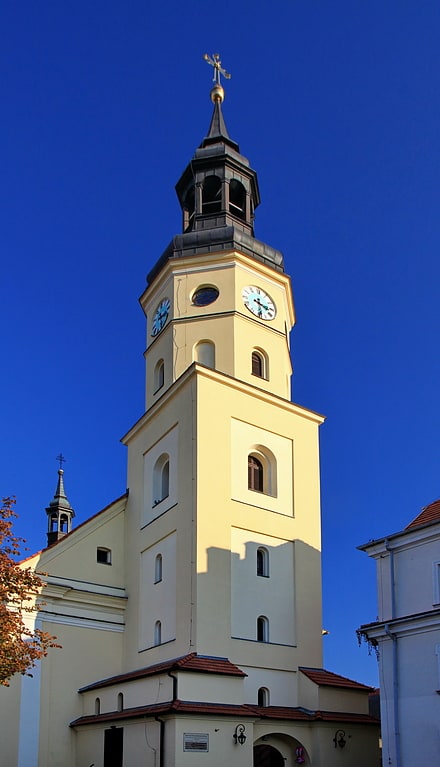
All Saints' Church in Pszczyna - a Roman Catholic temple, about which the first mention comes from 1326.
Address: 2 Plac Księdza Prałata Józefa Kuczery, Pszczyna
Muzeum Prasy Śląskiej
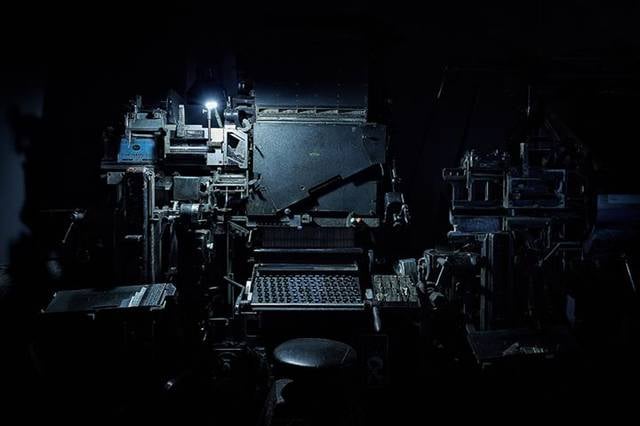
Museum
Address: 26 Piastowska, Pszczyna
Skansen "Zagroda Wsi Pszczyńskiej"
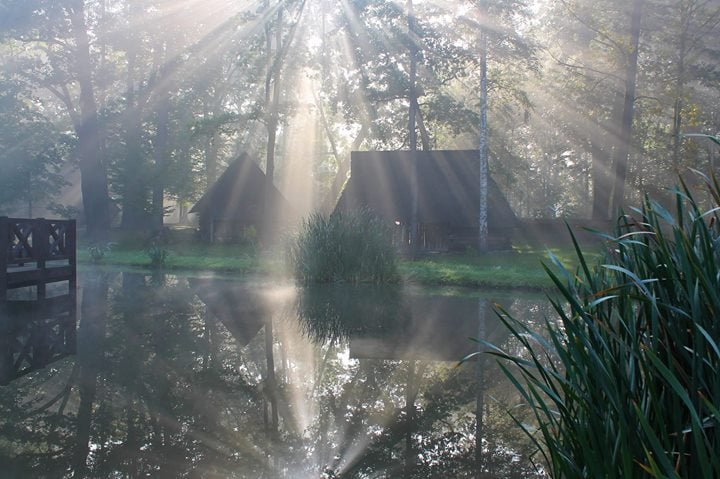
Zagroda Wsi Pszczyńskiej - open-air museum in Pszczyna, grouping monuments of wooden folk architecture from the Pszczyna region. It was established in 1975 on the area of about 2 ha in the Railway Park. After the expansion in 2013, the open-air museum gained, among others, a replica of a water mill, a service building with a ticket office and a souvenir store and a gazebo located by the pond. The open-air museum is located in the eastern part of the historic Pszczyna park. On nearly two hectares there are collected several objects of wooden architecture of the Pszczyna land. The oldest monument is the manor granary from Czechowice. A real attraction is also an octagonal barn from Kryry, a cottage from Grzawa, a smithy from Goczałkowice and a watermill from Bojszów, which today houses exhibition rooms.
The historical and tourist significance of Zagroda Wsi Pszczyńska is proved by the fact that it has been included in the Wooden Architecture Route, developed by the Marshal's Office, which links the most valuable and interesting examples of sacral and secular wooden architecture of Upper Silesia. The uniqueness of the open-air museum lies in the historic cottages, most of which are buildings made of original materials. In their interiors a lot of authentic equipment has been collected, including farming and craftsman's tools of everyday use, ladder carts, sleighs, elegant carriages, furniture and interesting exhibits of folk art.
The open-air museum also hosts educational workshops, and regional groups meet at folklore events such as "Meetings under the Brzym". The character of the place is also reflected in the staging of Easter rituals and Christmas Eve suppers.
The exhibit includes.: a hayloft from Frydek, a gate shed from Golasowice (former church gate), a barn from Kobielice, a mast house from Wisła Wielka, a granary from Rudołtowice, a coach house from Miedźna, barn from Kryry, apiary, well from Laka, pillar shrine from Poręba, mill with a windmill from Zebrzydowice, dwelling cottage from Grzawa, smithy from Goczałkowice, watermill from Bojszów.
The open-air museum is located on the Wooden Architecture Trail of the Silesian Province in the Pszczyna Loop.
Address: Parkowa 20, 43-200 Pszczyna
Dwór Ludwikówka
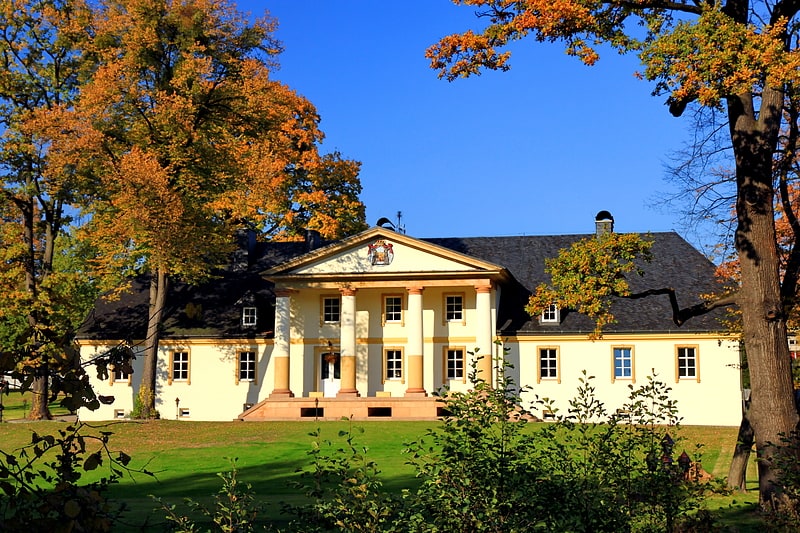
Manor "Ludwikówka" - a historic building in the type of stately nobleman's mansion, maintained in classical style, on Chopina Street in Pszczyna. The former residence mansion of the dukes of Pszczyna, now privately owned. Entered in the register of monuments of the former Katowice province under the number A/537/65 on February 7, 1966. Thoroughly restored in the years 2008-2010.
Address: 1-3 Ksawerego Dunikowskiego, Pszczyna
Brama Wybrańców
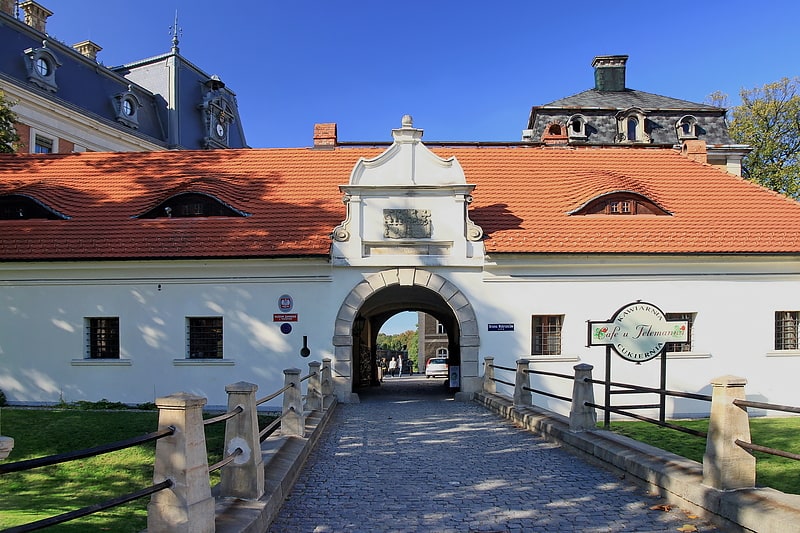
The Gate of the Chosen, also known as the "Warta" - was built in 1687, the oldest part of the Pszczyna castle complex preserved in an unchanged form to this day. Situated in the south-western part of the square, it was the main entrance to the castle. It was built by the builder Consilio Milius, commissioned by the then owner of the castle, Baltazar Promnitz, in the place of the former, 15th-century guardhouse with a drawbridge over the moat. It contained rooms for the castle guards. The soldiers for the guard were chosen by the Promnitzes from among the peasants from their estates and were called "the chosen ones". The Pszczyna Chosen Men guarded the castle until 1875.
It is a brick, plastered, one-story building with a south-facing wing connecting it with an annex and with a round tower covered with a tent roof at the southeastern corner. The triple-pitched roof is covered with tiles. The front elevation is seven-axial. On the axis there is a passage gate with a cruciform vault and a rusticated stone portal closed in a semicircle. The interior layout is partly single-, partly double-track. Inside the room by the tower there is a barrel vault with lunettes; in the room on the other side of the hallway, which was divided in more recent times, there is a beamed ceiling supported on profiled pine wood with rosettes.
A stone, arched bridge over the former moat, once surrounding the entire castle, leads to the gate. Above the portal, the slope of the tiled roof is interrupted by an ornamental gable, flanked with pilasters and flat escutcheons, on which stone plates with the coats of arms of the owners of Pszczyna - Baltazar Promnitz and Emilia Agnieszka Saska - are placed. A stone tablet with the date of the gate's construction hidden in the Latin inscription (chronostich) was built into the top.
The inscription says: OMNIPOTENS COELI, TERRAE PELAGIQVE CREATOR EXCVBIIS POSTES FVLCIAT HOSCE SVIS, which means: Almighty Heaven, Earth, Sea Creator let him guard this gate with his guard.
Today the Gate of Chosen Ones houses a café ("Café u Telemanna") and the Tourist Information Office.
There used to be a number of other buildings next to the gate, on the south side of the castle, along the moat, on the line of the former Gothic castle wall, including the ducal brewery, malt house and bakery. However, all these buildings were demolished in the 19th century.
Address: 1 Brama Wybrańców, Pszczyna
Duchess Daisy Monument
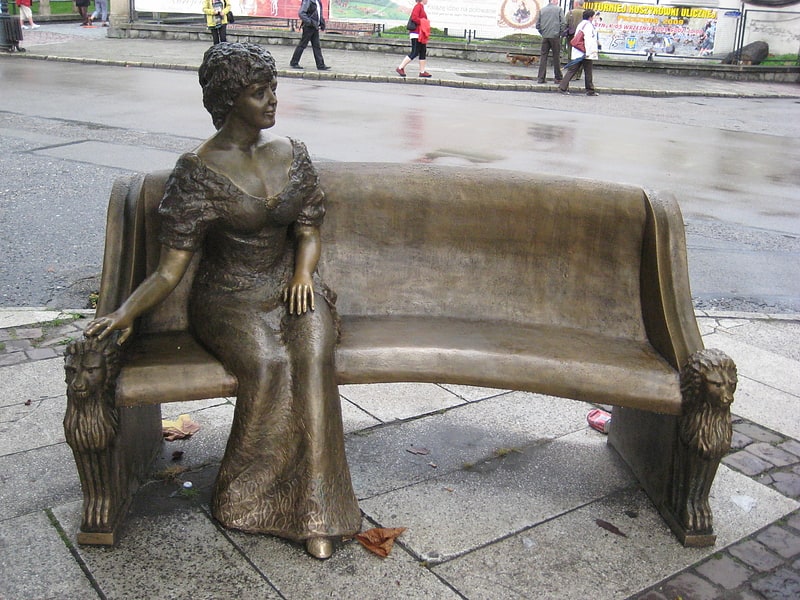
Princess Daisy's bench - was unveiled on May 1, 2009 in the market square in Pszczyna. The monument of Princess Maria Teresa Olivia Hochberg von Pless is the work of Pszczyna sculptor Joachim Krakowczyk. It was created during one of the Pszczyna Plein-Air Artistic Events. The cast of the monument was made by Gliwice Plant of Technical Devices.
Maria Teresa Oliwia Hochberg von Pless was an English aristocrat from the Cornvalis-West family, who married John Henry XV, the lord of the castle in Pszczyna in 1891. During both World Wars she was engaged in charity work. During World War I she took care of the wounded, during World War II she gave food parcels to prisoners of the Groß-Rosen camp. She divorced in 1923, but she remained in Pszczyna until the Nazi authorities resettled her to Wałbrzych.
The monument is associated with an annual event - a shooting tournament organized by Pszczyna Bractwo Kurkowe.
Zagroda Żubrów
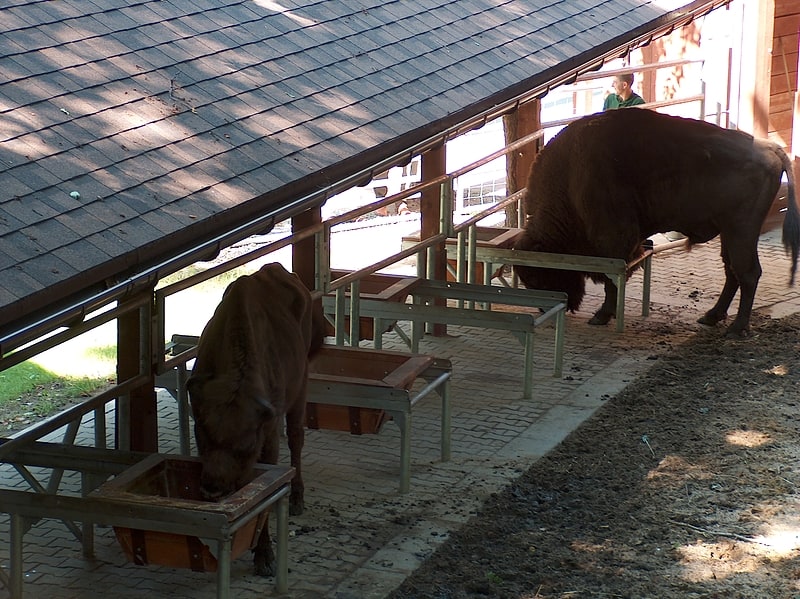
Pokazowa Zagroda Żubrów in Pszczyna - a bison enclosure, open to the public. It is located in Pszczyna, on the territory of historic Pszczyna Park, in the part called "Park Zwierzyniec". It consists of two enclosures with total area of 10 ha and infrastructure, including feeders, quarantine enclosure and feed stores.
In addition to bison, visitors can also see mouflons, red deer, fallow deer and roe deer, as well as several species of birds: mallard ducks, red-breasted cassowaries, Canada geese, swans, Indian peacocks. Visitors can also visit exhibitions on the fauna and flora of the Pszczyna land and see a three-dimensional movie about European bison.
Address: Żorska 5, 43-200 Pszczyna
Pokazowa Zagroda Żubrów w Pszczynie
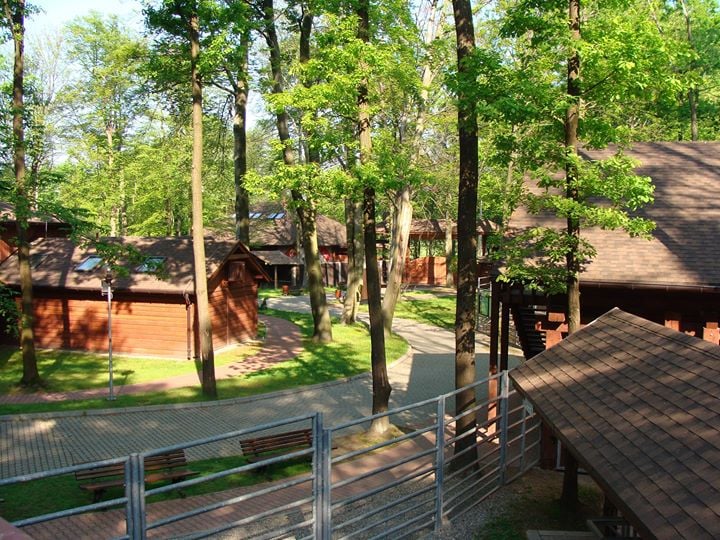
Relax in park, Park
Address: Żorska 5, Pszczyna